DAY 1: ARRIVAL IN ISTANBUL
Arrival in Istanbul on the flight
You will then be greeted by your guide and driver outside the airport
Hotel transfer and free time
Dinner
Overnight at hotel in Istanbul.
DAY 2: ISTANBUL
Breakfast at the hotel.
Topkapi Palace was built in 1459, on the acropolis of ancient Byzantium, covering a trifle of 700,000 m2 (the part open to visitors is 400,000 m2).
Hagia Sophia is certainly the most famous monument in Istanbul. The word Hagia Sophia comes from the Greek Hagia Sophia, which means "Holy Wisdom." In Turkish, Hagia Sophia is called Ayasofya. Hagia Sophia is an ancient Christian basilica founded during the time of Constantinople, more precisely in the 6th century. During the time of Sultan Mehmed II (15th century), Hagia Sophia was transformed into a mosque. Hagia Sophia, whether mosque or church, has not been a place of worship since 1934, when it was classified as a museum.
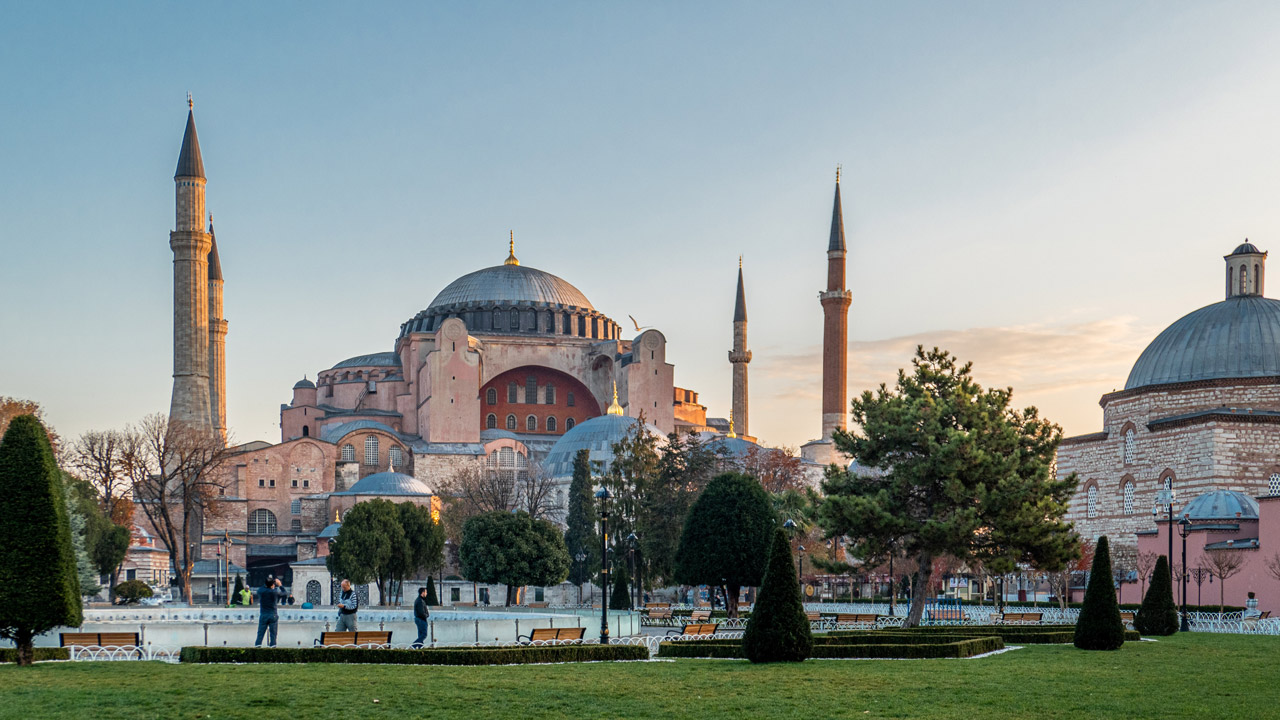
The Basilica Cistern is a place to absolutely discover, both historic and magical. The Basilica Cistern is located near the Hagia Sophia: its entrance is discreet, do not hesitate to ask (Yerebatan Sarnici) which means the sunken cistern. The Basilica Cistern is reopening its doors. To the great delight of locals and tourists, the Basilica Cistern in Sultanahmet is once again open to the public. After 5 years of renovation, we are lucky enough to be able to visit it.
Lunch and dinner at the restaurant
Overnight at hotel in Istanbul.
DAY 3: ISTANBUL
Breakfast at the hotel.
We start the day with a boat cruise on the Bosphorus Strait, We will contemplate the most beautiful panoramic views of the city, palaces, mosques, Ottoman houses, bridges, fortresses, etc. all along the Bosphorus.
Lunch during the visit
Then, the visit of the Spice Market (Misir Çarsisi) One of the most interesting places in old Istanbul, it sells not only spices but also oriental pastries, dried fruits, and various sweets.
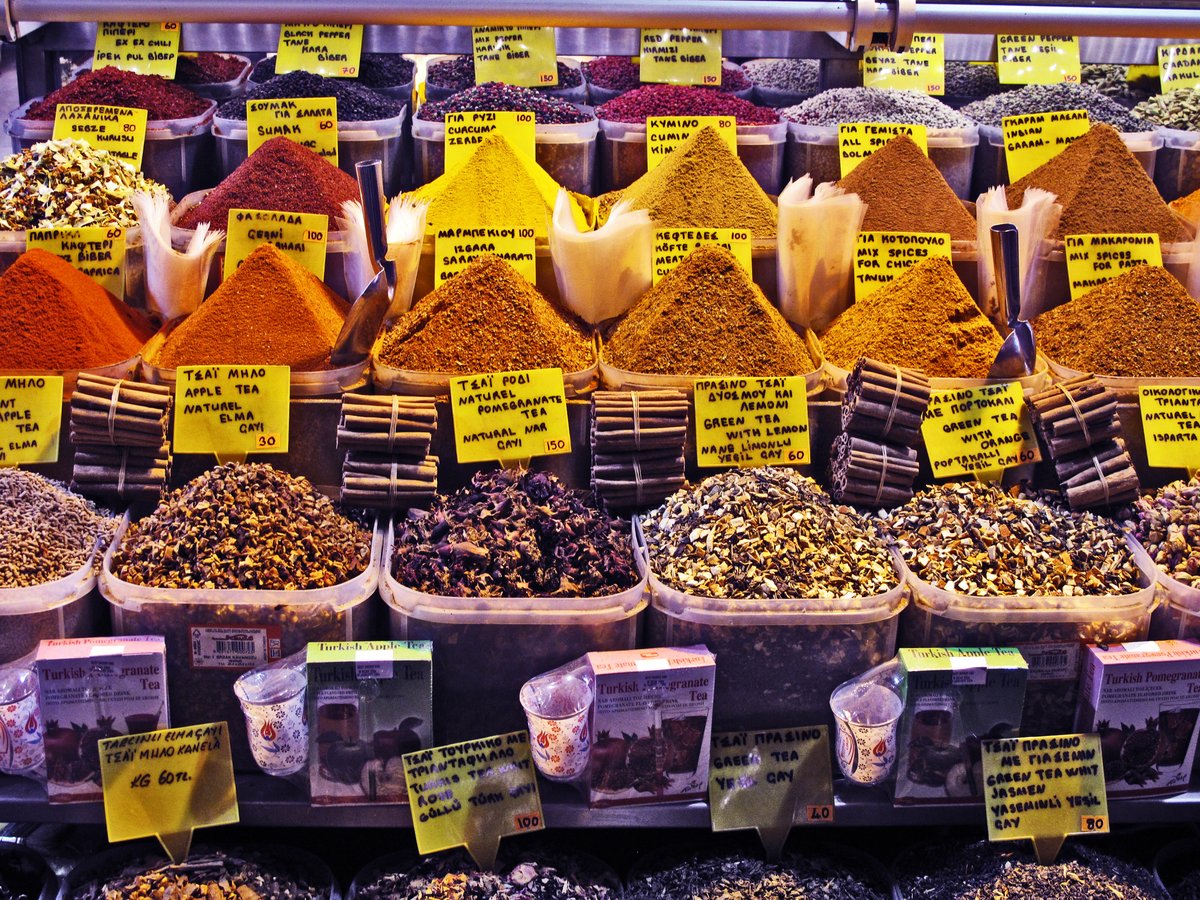
Lunch at the restaurant.
In the afternoon, modern shopping mall
Grand Bazaar; the oldest large shopping mall in the world with a special oriental atmosphere with thousands of shops in its labyrinths
Dinner
Overnight at hotel in Istanbul
DAY 4: ISTANBUL – CAPPADOCIA
Breakfast at the hotel.
Transfer to the airport from Istanbul for the flight to Cappadocia
Takeoff at … on flight …
Arrival at Cappadocia has ….
Lunch at the restaurant.
Visit of:
The underground city of Derinkuyu: it holds many mysteries that scientists have yet to unravel. And visitors have the opportunity to see this incredible building in person, walking through safe and well-studied areas with a guide.
The village of Sinasos or "Mustafapaşa", as it is called today, is a town in the province of Ürgüp in Nevşehir. Sinasos, located 5 km from Ürgüp, is an important tourist center with important historical buildings and natural beauties..
Dîner libre
Nuit à l’hôtel à Cappadoce.
NOTE: POSSIBILITY OF SWITCHING DAY 4 AND DAY 5 (hot air balloon)
DAY 5: CAPPADOCIA
Breakfast at the hotel.
Cappadocia offers wonderful landscapes. Small, steep-sided rivers have carved their beds into the soft soil of the plateau, and stone needles stand proudly everywhere. The inhabitants dug into the rock, built churches and monasteries
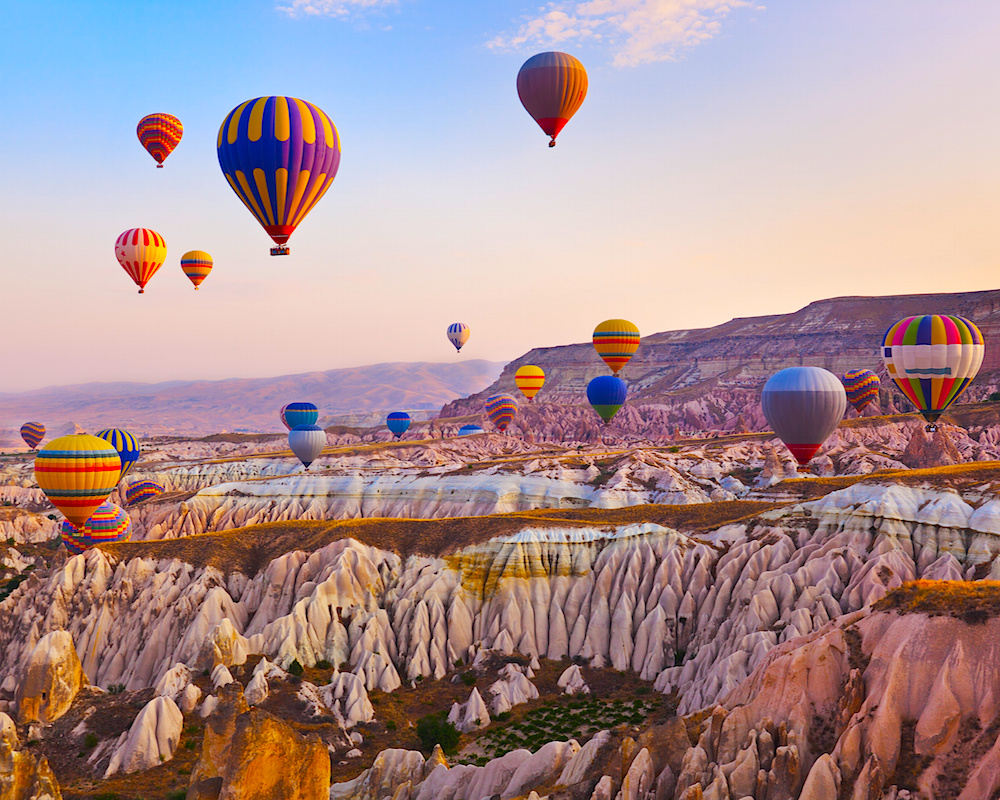
Day of discovery of Cappadocia, a mysterious region with lunar landscapes, starting with the incredible open-air museum of Göreme with its countless rock churches.
Pigeon Valley is located between the districts of Göreme and Uçhisar in Cappadocia and attracts its visitors with a mystical atmosphere.
Lunch at the restaurant.
Then stop for the Uçhisar rocky peak where we will visit the village, several stops in the different valleys to admire the magical and surreal landscape where the fairy chimneys of Cappadocia dominate.
Visits to several local artisan shops.
Free dinner
Overnight at hotel in Cappadocia.
NOTE: POSSIBILITY OF SWITCHING DAY 4 AND DAY 5 (hot air balloon)
DAY 6: CAPPADOCIA – KONYA
Breakfast at the hotel,
Continuing to discover Cappadocia:
The Valley of the Fairy Chimneys " Pasabag", crossing the Valley from Avcilar and the Valley from Kiliclar with their ancient troglodyte dwellings and fairy chimneys.
Visit one of the largest underground cities in Cappadocia, excavated over eight levels during the Christian era, a refuge for persecuted populations over the centuries.
Stops at craft centers for onyx, carpets, and other local handicrafts.
Passing by Avanos, the village potters crossed by the Kizilirmak River.
Lunch at the restaurant.
After lunch, On the way to Konya, holy city of the whirling dervishes
Halfway, visit the largest and best-preserved of the Seljuk caravanserais: the Sultanhan
Seljuk Caravanserai, The Sultanate of Rum, under the Turkish Seljuk dynasty, covered most of Anatolia. The sultans established a network of traveler's lodges, called caravanserais in French. The words kervansaray and han are partly interchangeable in Turkish. Both referred to inns that could accommodate caravans. The kervansaray was most often located in the countryside with its own staff of artisans (blacksmiths, etc.), while the han was most often located in the city. The name of the establishment was often constructed with -han as a suffix.
Dinner at the hotel..
Overnight at hotel in Konya
DAY 7: KONYA – PAMUKKALE
Breakfast at the hotel.
Around 8am we will head west to Asia Minor, to the ancient Greco-Roman world. It will be a fairly long but pleasant journey with beautiful variations in nature, landscapes and typical dwellings.
Our first step will be to Egridir, a charming little old town located on the edge of a beautiful lake
Then we will cross the Isparta plateau, the land of roses and lavender in Türkiye
DIn the afternoon, we reach the famous Pamukkale, otherwise known as "Cotton Castle". Which is also on the UNESCO World Heritage List. Here we will visit the travertines of Pamukkale and the remains of the ancient city of Hierapolis
Visit the site of Pamukkale: Over the centuries and millennia, the limestone waters have covered the mountain with a white mantle, hence the name Cotton Castle, given to this unique and exceptional natural site. Its ancient swimming pool is famous for its submerged Roman columns, the result of an earthquake..
Overnight at the hotel in Pamukkale
DAY 8: PAMUKKALE – EPHESE – IZMIR -ATHENS
Breakfast at the hotel.
Continuation to Ephesus, A jewel of antiquity; a visit to the World Heritage Site. It was an important port in ancient times - a description of Ephesus by Pliny the Elder states that "the sea used to rise as high as the Temple of Diana" - but the entire area gradually silted up, and the city is now nearly seven kilometers from the Aegean coast.
Visit to the House of the Virgin Mary (in Turkish Meryemana Evi, the "house of Mother Mary" or Panaya Kapı from the Greek Panagia Pylê, the "gate of the All-Holy") is a Catholic and Muslim sanctuary on the hill of Bülbül Dag ("Nightingale Mountain") near Ephesus, seven kilometers from Selçuk (today in Türkiye).
Transfer to the airport from Izmir late afternoon for the flight to Athènes (Wednesday-Friday and Sunday)
Takeoff at …6:00 p.m. on flight …
Arrival in Athens at …7:00 p.m.
Transfer to the hotel
Dinner and overnight stay at the hotel in Athens.
DAY 9: ATHENS
Breakfast at the hotel.
Visit of:
The Acropolis of Athens is a limestone plateau rising in the center of the city of Athens, which it has long served as a citadel, from ancient Athens to the Ottoman occupation, as well as a religious sanctuary during Antiquity. A UNESCO World Heritage Site, the Acropolis is currently one of the most visited tourist sites in the world.

Walk in Plaka and Monastiraki.
Plaka is one of Athens' iconic neighborhoods. Here we offer you an itinerary to discover this charming neighborhood. We will show you the great classics of Plaka as well as some little gems off the beaten track.

Monastiraki and the flea market; see the antiques carved into the slopes of the Acropolis; and explore the alleys of Plaka and the Cycladic-style Anafiotika area.
Lunch at a taverna.
Return to the hotel.
Dinner at the hotel.
Overnight at the hotel in Athens.
DAY 10: ATHENS – DELPHI
Breakfast at the hotel.
Departure for Delphi
Stop and lunch in Arachova
Delphi is the site of a Panhellenic sanctuary, located at the foot of Mount Parnassus in Phocis, where the oracle of Apollo speaks through his prophetess, the Pythia; it also houses the Omphalos or "navel of the world." Invested with sacred significance, Delphi was life in the 4th century BC the true center and symbol of the unity of the Greek world
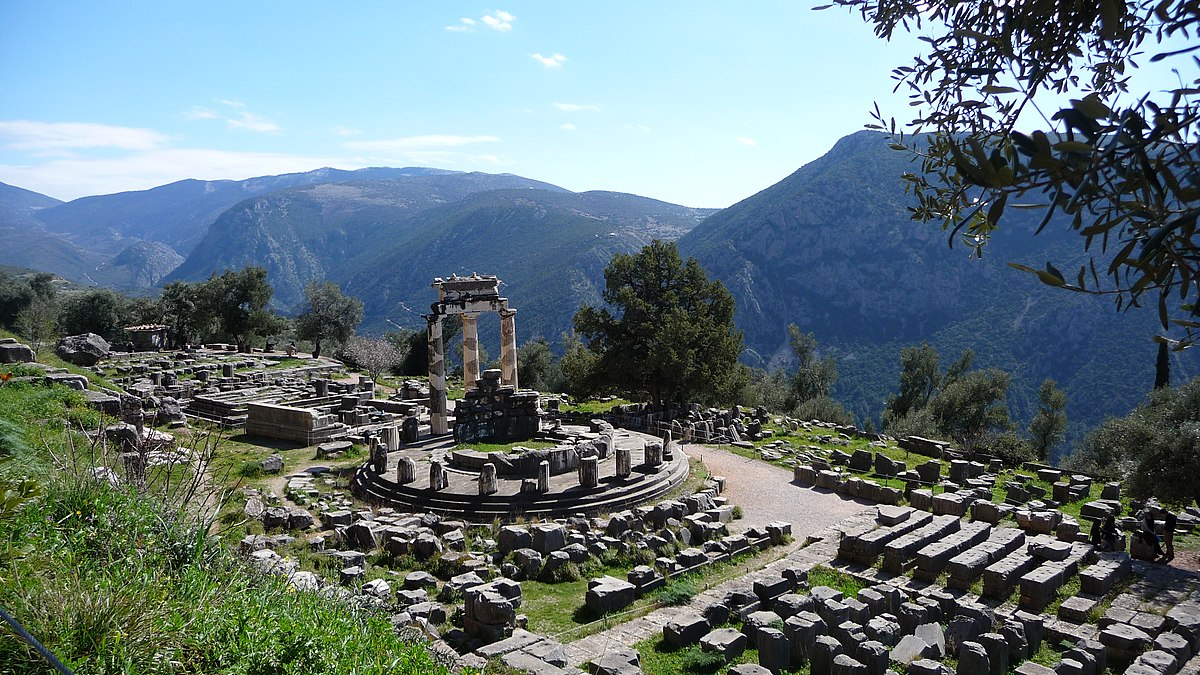
Visit of the site of Delphi.
The omphalos - the symbol of the center of the world in classical antiquity. The omphalos was generally materialized in the form of a sacred stone, a betyl. The most famous is that of Delphi, located in the adyton of the oracular temple of Apollo.
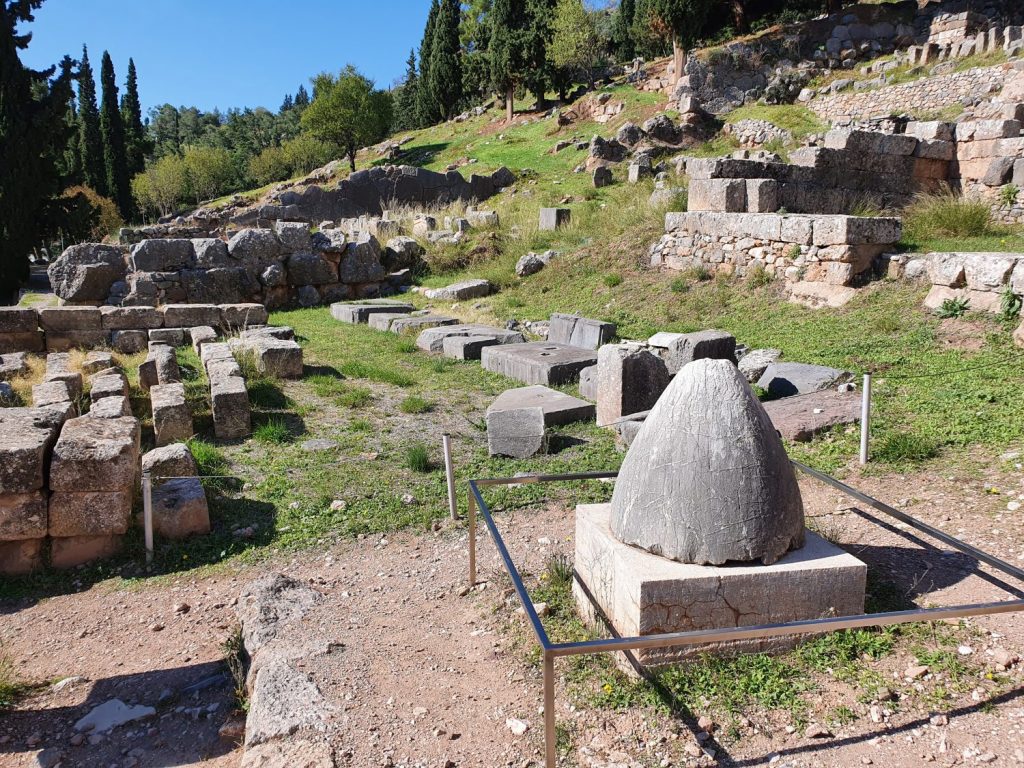
DAY 11: DELPHI-KALAMBAKA
Breakfast at the hotel. Departure at 8 a.m.
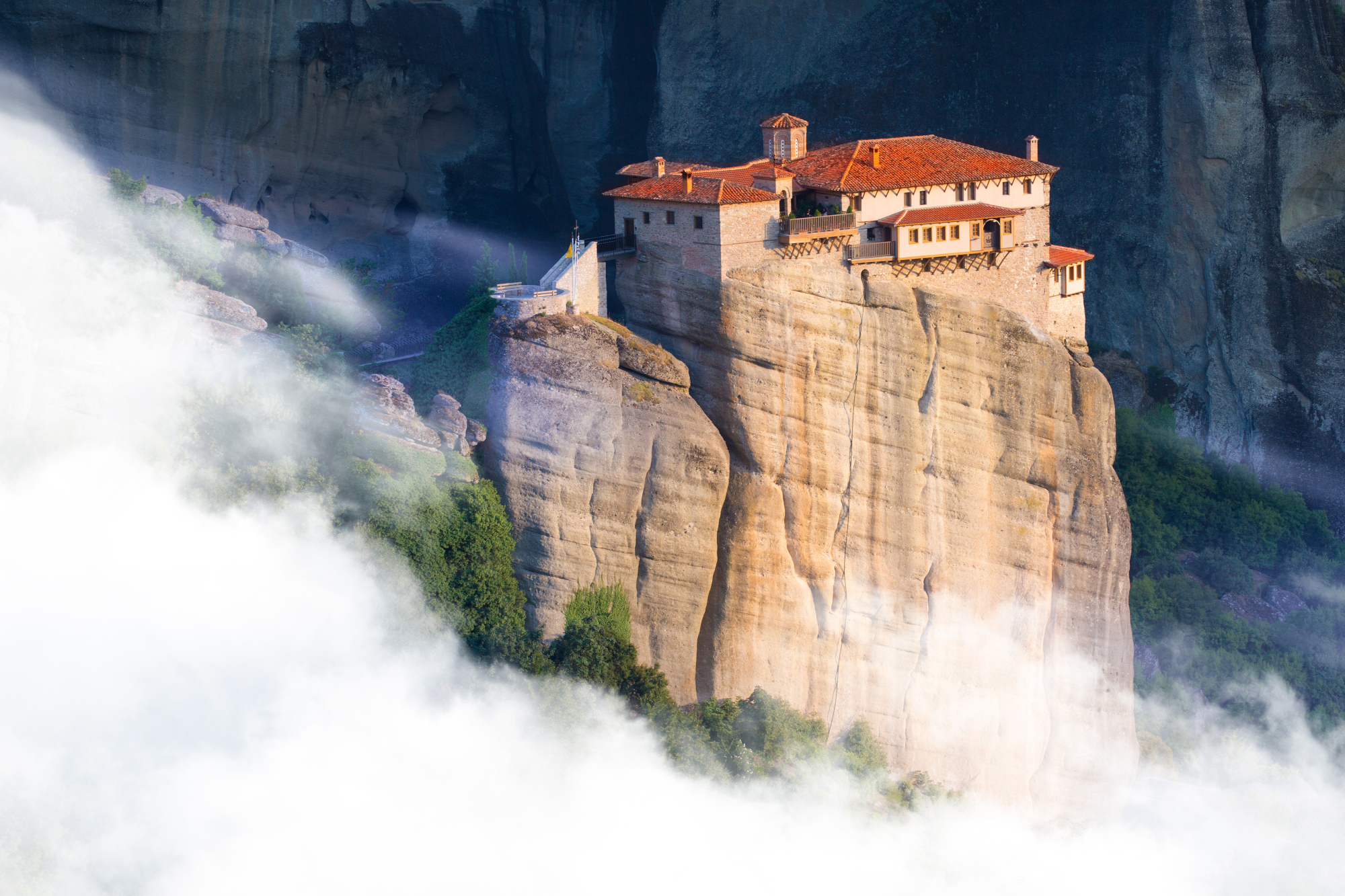
Visit of a from monasteries to Meteora magnificent frescoes, icons and reliquaries. Enjoy a panoramic view of these enormous rocks: a magical site.
Around 1920, the current staircases were built to provide easier access. Previously, people climbed in large baskets suspended from pulleys and operated with counterweights.
Dinner at the hotel..
Overnight at the hotel in Kalambaka
DAY 12: KALAMBAKA-ATHENS
Breakfast at the hotel.
Crossing Thermopylae (2 hours drive) and the seaside town of Kamena Vourla.
Lunch at the restaurant.
Thermopylae are a famous Greek gorge located along the Lamian or Malian Gulf, at the foot of Mount Callidroma, a spur of Mount Oeta. It is the road from Thessaly to central Greece, the only one through which chariots and an army could pass in Antiquity.
Kamena Vourla is a seaside town in the region of Fthiotida. It is located on the northwest coast of the northern Gulf of Euboea, while the slopes of Mount Kallidromos rise just behind the town, namely those of Mount Knimis..
Departure for Athens (2.5 hours drive)
Dinner at the hotel.
Overnight at hotel in Athens
DAY 13: ATHENS
Breakfast at the hotel.
Free day
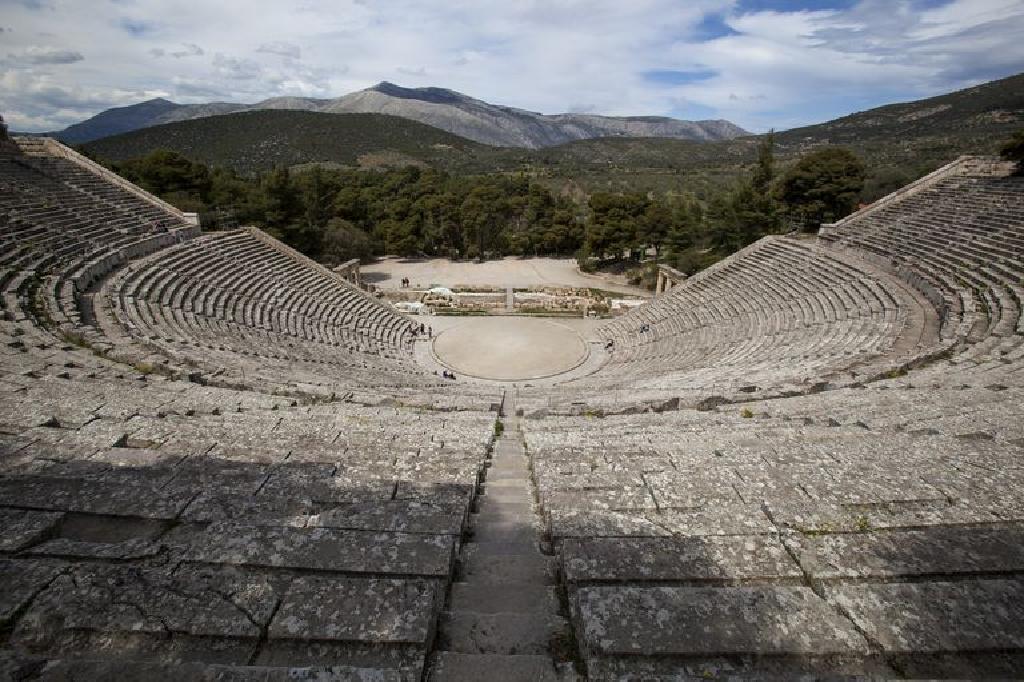
ATHENS-HERAKLION FLIGHT or ATHENS-HERAKLION FERRY
8:10 p.m./9 p.m. 9 p.m./6:30 a.m. (night)
DAY 14: HERAKLION
Breakfast at the hotel
Visit the Palace of Knossos
Knossos was first discovered in 1878 by a famous Cretan antiquarian, but in 1900 it owes its fame to Arthur Evans, a British archaeologist who led major excavations at the site..
Location Knossos is a major archaeological site located near Heraklion, the capital of Crete, Greece..
History: Knossos was the administrative and cultural center of the Minoan civilization, one of the oldest civilizations in Europe. It was built around 2000 BC and flourished until its destruction around 1375 BC..
Architecture: The Palace of Knossos is known for its intricate architecture with halls, corridors, colorful frescoes and enigmatic rooms like the famous "labyrinth" ".
Mythologie: Some archaeologists suggest that the palace of Knossos may be linked to the myth of the Minotaur, a half-man, half-bull monster..

Lunch
Visit to the Koules Fortress
Localisation: Koules Fortress, also known as Rocca a Mare, is located at the Venetian port of Heraklion, Crete.
Histoire: Built in the 16th century by the Venetians, the fortress was used for military purposes to protect the city from maritime attacks.
Architecture: Koules boasts impressive architecture with massive walls, watchtowers, and cannon embrasures. It also offers panoramic views of the sea and the city..
Utilisations ultérieures: The fortress was used by various civilizations over the centuries, including the Ottomans. Today, it is open to visitors.

Road to RETHYMNO
The Old Town of Rethymno is one of the city's gems, with its narrow streets, well-preserved Venetian buildings, Ottoman mosques, and elegant fountains.
The Venetian harbor is a major attraction in the Old Town, offering a picturesque atmosphere with its seaside restaurants, shops, and cafes.
The Fortezza is a Venetian fortress located on a hill west of the Old Town. It offers panoramic views of the city and the sea. It also houses an archaeological museum displaying local finds, spanning periods from the Minoan to the Ottoman era.
Rethymno has superb beaches, some of which are located close to the city. The city beach is well-organized, while other beaches to the west, such as Preveli, offer a more unspoiled atmosphere.
Cretan cuisine:
The city offers delicious Cretan cuisine, highlighting traditional dishes and local products, such as olive oil, cheese, honey and aromatic herbs..
Dinner
DAY 15: RETHYMNON-CHANIA-SOUGIA-AGIA ROUMELLI
Breakfast at the hotel.
Route from Rethymno to Agia Roumelia via Chania and Sougia
Rethymno-Chania: 1 hour 20 minutes, Chania-Sougia: 1 hour 10 minutes, Sougia-pier: 8 minutes (600 meters), Ferry: 40 minutes
For a pleasant visit to Agia Roumeli, plan your time well, enjoy the beach, and sample the local cuisine.
Lunch
Agia Roumelli - the iron gates
In this tourist hotspot of Crete, the Samaria Gorge, are located what is called the "Iron Gates", a name that actually refers to the narrowest parts of the gorge, the last of which does not exceed 4 meters wide and is about 300 meters high. The rock walls thus form like monumental gates, hence surely this name "Iron Gates". The place is located towards the end of the 18km hike when you approach the sea and the small port village of Agia Roumeli.
We will only do part of the hike in the opposite direction to the one usually followed. You will therefore climb for the time you have chosen and will quickly arrive at the Iron Gates, the difference in altitude here is not very steep.
Return to Rethymno by ferry (check timetables) to Sougia and drive to Rethymno
Visit Chania either in the morning (lunch) or on the way back
CHANIA
The former capital of Crete and now the island's second largest city, Chania (Hania in Greek; pronounced "Rania") immediately captivates visitors with its colorful Venetian harbor, eclectic architectural heritage, and the charming streets of its old town. An essential stop on a trip to Crete, this city, both historic and vibrant, can serve as a base for exploring the magnificent landscapes of western Crete. Between mountains and olive groves as far as the eye can see, pocket villages and isolated monasteries, secret coves and dream beaches, head for one of the Mediterranean's most captivating travel destinations.
Free dinner.
Overnight at the hotel in Rethymno
DAY16: RETHYMNON-CHANIA-MATALA-HERAKLION
Breakfast at the hotel.
MATALA
Matala is located 70 km from Heraklion and 4 km from Pitsidia. This small fishing village is known for its landscaped caves and hand-dug cavities. During the "Flower Power" era, many hippies stopped here on the equally famous Kathmandu road. Bob Dylan and Cat Stevens were among them. Today, the area has become very touristy: shops, guesthouses, restaurants, etc. The pretty Red Beach is a 30-minute walk away.
Lunch in Matala
dinner at the hotel.
Return to HERAKLION.
DAY 17: HERAKLION-SANTORINI
Breakfast at the hotel.
Heraklion-Santorini ferry departure 9am, duration 1h50 (departures possible from 7:30am).
Check in hotel.
Lunch
The turn of Santorini Island. There are about 20 villages in Santorini: there are more touristy destinations like Fira, Oia and Kamari, and small traditional villages like Exo Gonia and Vothonas that only the occasional tourist visits..
 Villages d'Oia is probably the most famous village on the island. If you haven't been to Santorini yet, you might not know the name Oia. However, you should know that all the magnificent photographs of Santorini come from Oia (or almost...). Located in the north of the island of Santorini, the small village of Oia is the most beautiful village on the island of Santorini. And not only that, Oia is probably also one of the most beautiful villages in Greece.
Villages d'Oia is probably the most famous village on the island. If you haven't been to Santorini yet, you might not know the name Oia. However, you should know that all the magnificent photographs of Santorini come from Oia (or almost...). Located in the north of the island of Santorini, the small village of Oia is the most beautiful village on the island of Santorini. And not only that, Oia is probably also one of the most beautiful villages in Greece.
Pyrgos: The village is located in the central part of the island, facing south, and was built on Santorini's highest hill, from where you can see the entire island and the surrounding sea. Famous for its churches and monasteries (the most important of which is the Monastery of Prophet Elias), narrow streets, and cafes with views, Pyrgos was the island's capital until the 19th century..
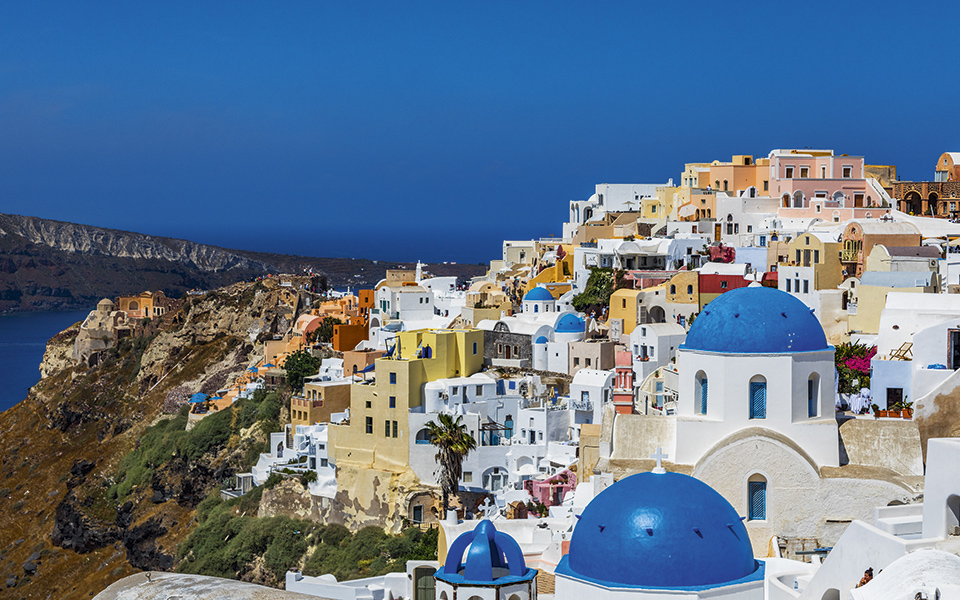
DAY 18: SANTORINI
Breakfast at the hotel
Dinner at the hotel.
Overnight at the hotel in Santorini.
DAY 19: SANTORINI-ATHENS -ISTANBUL – NOUMEA
Breakfast at the hotel
Free day
Flight to Istanbul with a stopover in Athens
Transfer to the airport from Santorini for the flight to Istanbul with a stopover in Athens
Take off at 9:50, arrival at 15:00
In Istanbul, flight to Noumea at 2:00 a.m.
Fin de nos services
















 Print program
Print program